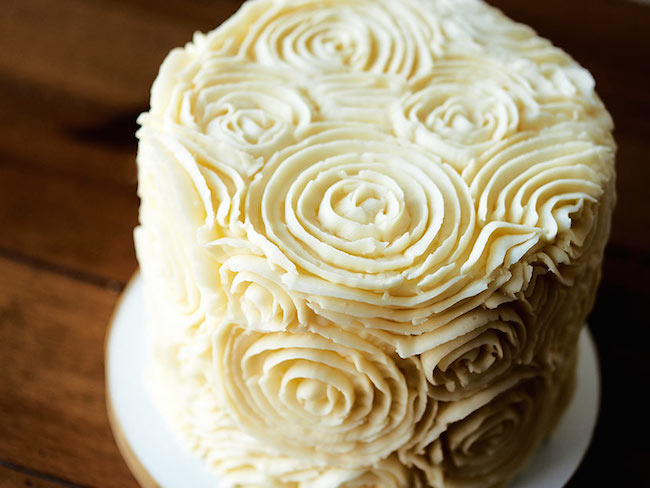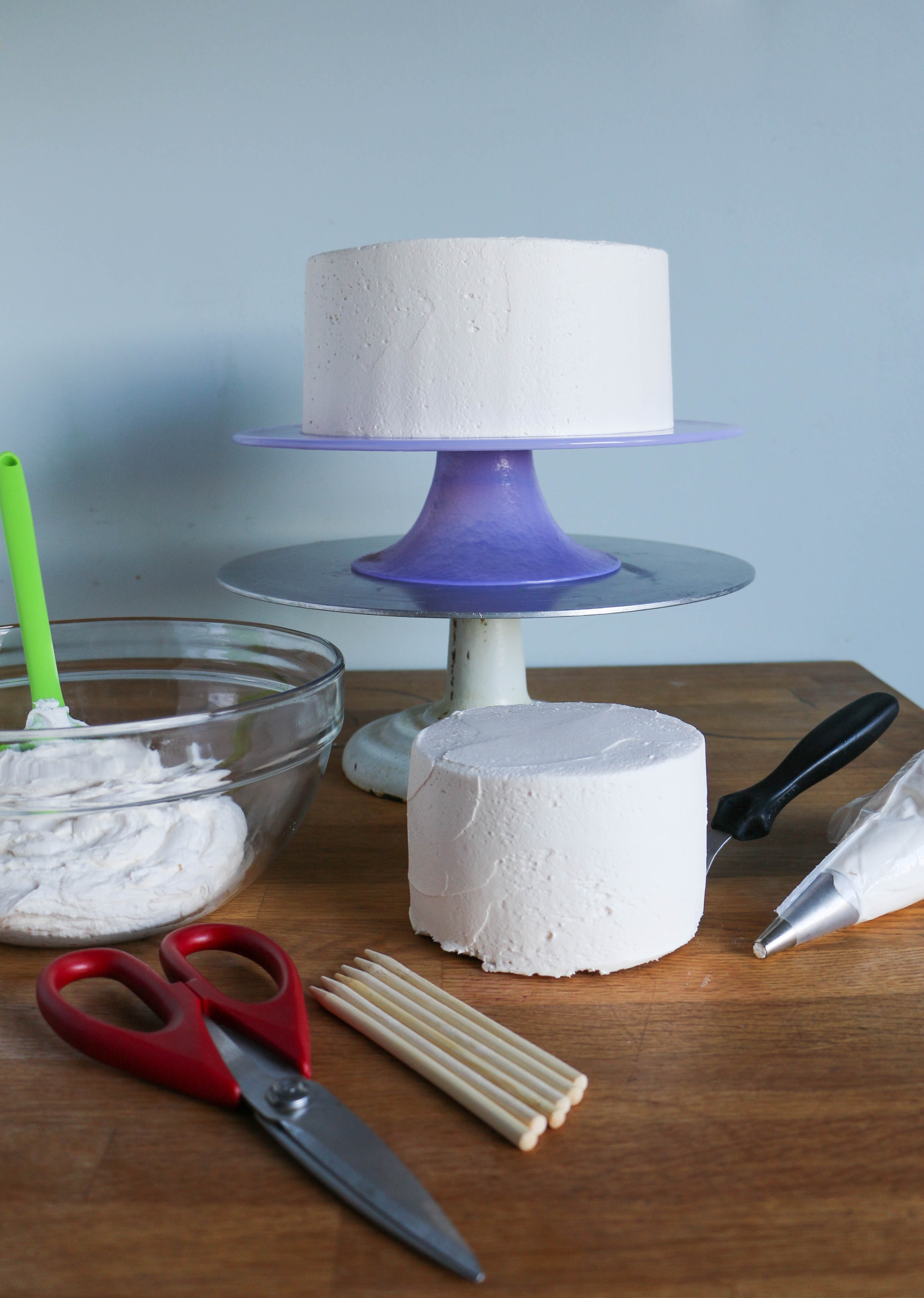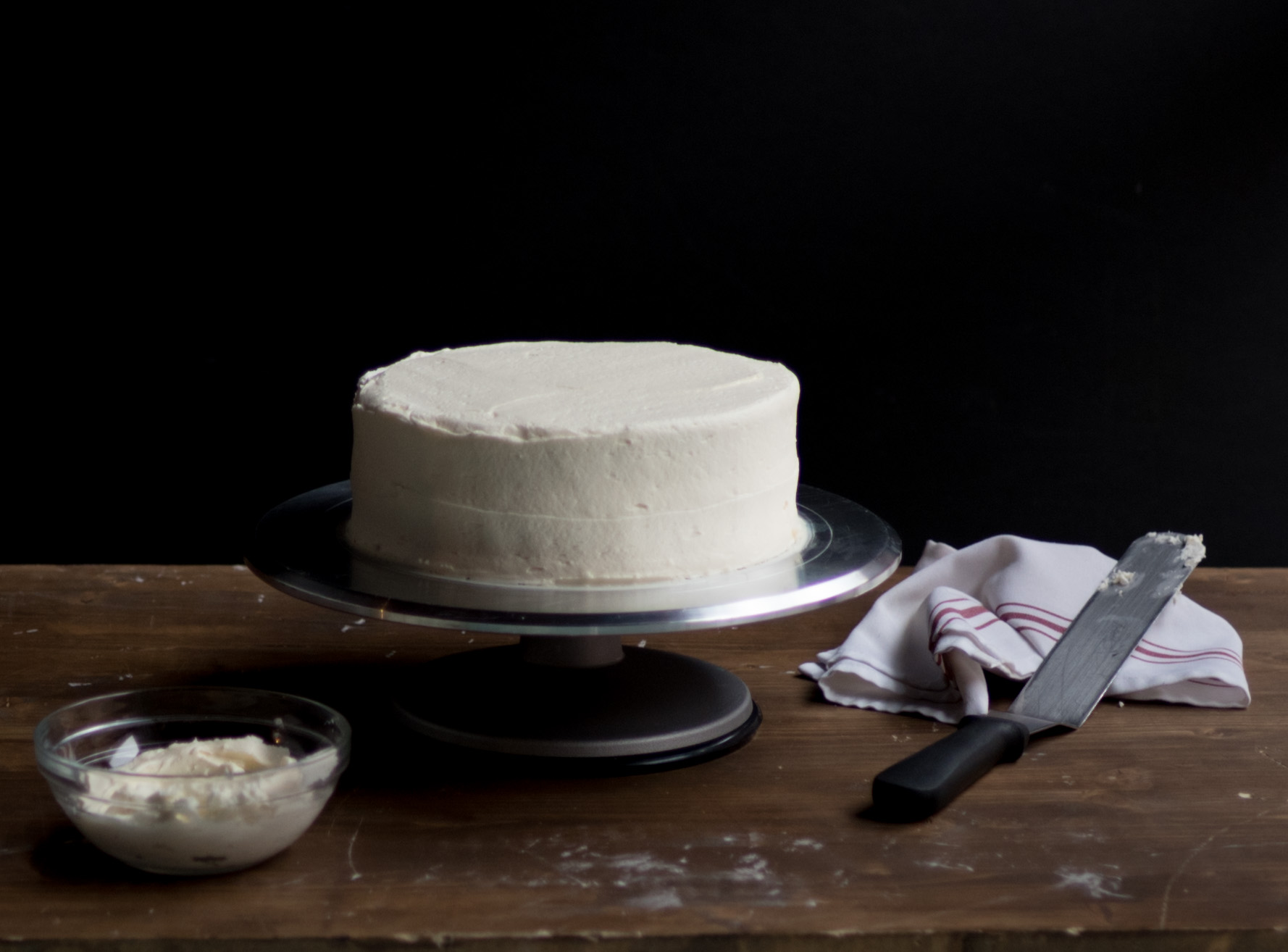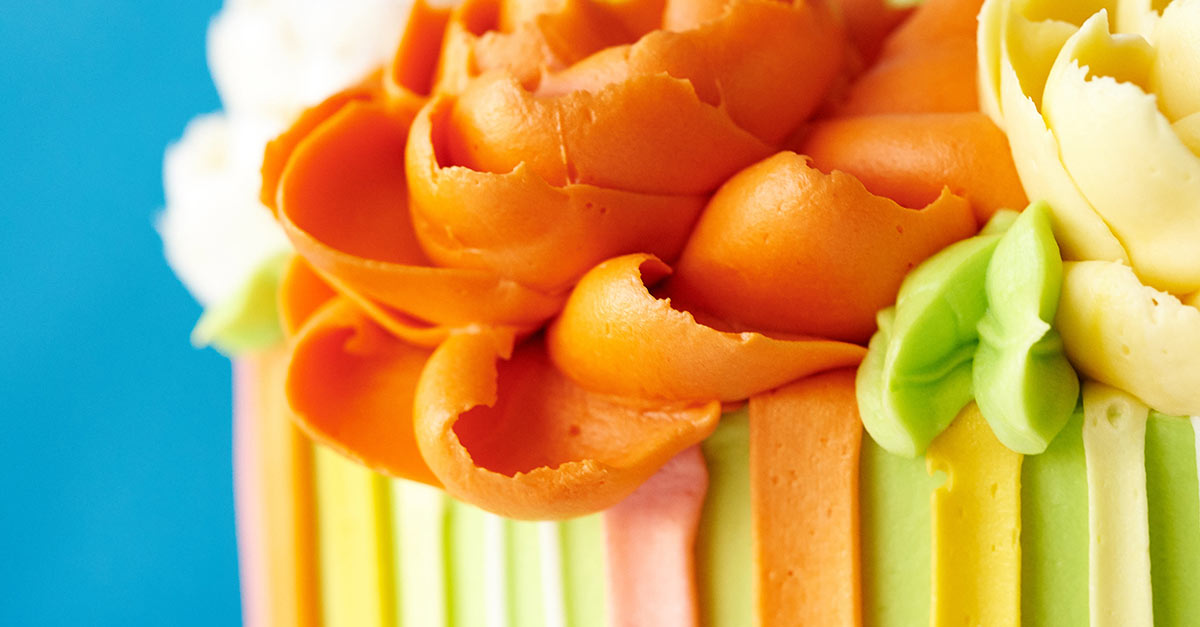
From Shannon Bond’s Modern Buttercream Techniques: Ruffles, Rosettes & More

The buttercream will “crust” from the sugar and liquid solidifying.
What is the purpose of crusting buttercream? To give a couple of examples:As a primer.
 Crusting buttercream can be an asset as a “base” that you can later apply more designs. Once it sets, you will have a firmer working surface, which will make your life a lot easier when applying delicate piping such as in the photo above. This firmer surface will also act as a wonderful backdrop for adhering fondant or gum paste decorations.
Crusting buttercream can be an asset as a “base” that you can later apply more designs. Once it sets, you will have a firmer working surface, which will make your life a lot easier when applying delicate piping such as in the photo above. This firmer surface will also act as a wonderful backdrop for adhering fondant or gum paste decorations.
As armor.
Cakes that are covered all over with a piped design as its primary icing, such as the one above, can benefit from using a crusting buttercream. The icing is piped while the buttercream is still quite soft, but as it “sets” it will become firm, which makes the delicate shapes a bit sturdier. Additionally, cakes that are decorated or iced with a crusting buttercream are better able to withstand the elements, making it a decorator’s friend when it comes to hot weather cake decoration.Are there any downsides to crusting buttercream? Here are some considerations that may be of interest:
- Many crusting buttercream recipes rely heavily on solid vegetable shortening. Some include all vegetable shortening (no butter), some include part butter and part vegetable shortening. The solid nature of shortening and the fact that it doesn’t melt as quickly makes it a good choice, texture-wise; however, many agree that the flavor benefits from the addition of at least some butter.
- Because confectioners’ sugar is vital to getting the texture right, crusting buttercreams tend to be very sweet.
- This type of buttercream does, as the name implies, “crust” and become firm, so making changes or wiping away part of the icing and having a re-do can be difficult.

From Lauren Bozich and Marianne Carroll’s Buttercream Basics: Simple Celebration Cakes
Now that you’re educated on the ways of the crusting buttercream, let’s discuss how to make it for your next cake! Before offering the recipe, here are some notes and suggestions:
- Be sure you have your cake(s) baked, cooled, leveled and ready. Although a crusting buttercream won’t set up instantly, it is best to be used to ice a cake fairly soon after whipping up a batch.
- If you are not able to ice your cake directly after making the icing, it’s OK. Although it is best the same day made, the icing can be stored overnight at cool room temperature in an airtight container, or refrigerated for several days in an airtight container. Bring to room temperature before using to ice a cake.
- Be sure that you have enough time allotted to allow the buttercream to set before adding other decoration or icings.
- If you want a pure white crusting buttercream, strive to use butter without colorings added (read the label to see if it has any added) or consider using all shortening instead of part butter. Also, use clear vanilla extract instead of the regular brown-tinted extract, which will add a slight beige tint to the buttercream.
- If you’d like to impart a different flavor, you can use any number of different extracts instead of vanilla, but be aware that if they have a tint, it may impart a color to the buttercream.
- Adding coloring to the buttercream is fine, but keep in mind that you may want to reduce the amount of liquid you add to the mixture.
- When it comes to the milk in the recipe, you can also substitute water, lower-fat milk or even cream. Just be sure to add the liquid a little at a time to see the quantity that will give you a consistency that works for you. Keep in mind that the amount of liquid you add may vary depending on the season, as weather conditions (humidity and heat) can affect the texture.
Crusting buttercream icing
This recipe is adapted from what is often called the “Viva” method–named after a brand of paper towels, which, owing to their flat (non-quilted or textured) surface, works extremely well for flattening the surface of your crusting buttercream.Ingredients:
- 1 bag (2 pounds) sifted confectioners’ sugar
- 1 stick unsalted butter, softened and cut into ½-inch cubes
- 1 ½ cups solid vegetable shortening
- 1 ½ tablespoons vanilla extract
- ⅛ to ½ cup whole milk (to desired consistency)

Share tips, start a discussion or ask one of our experts or other students a question.
No Responses to “Crusting Buttercream: How to Make Buttercream That Sets Firm”